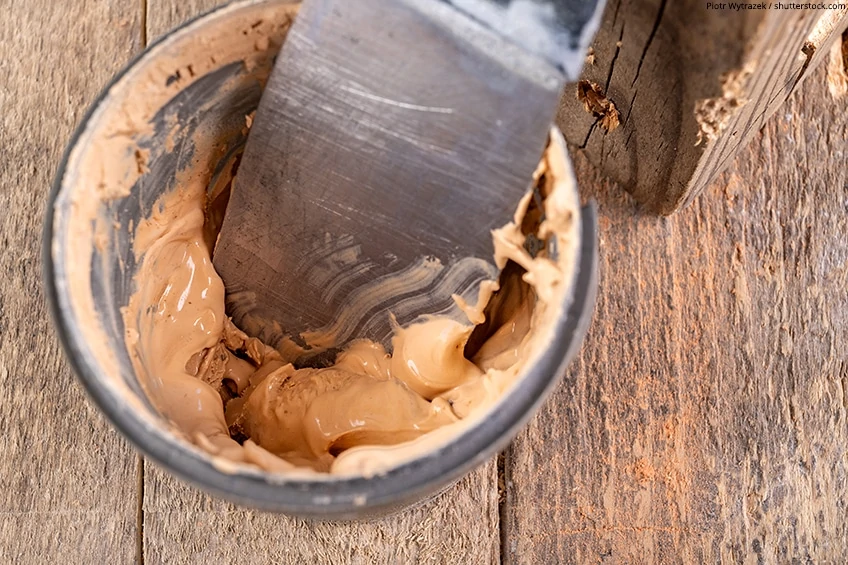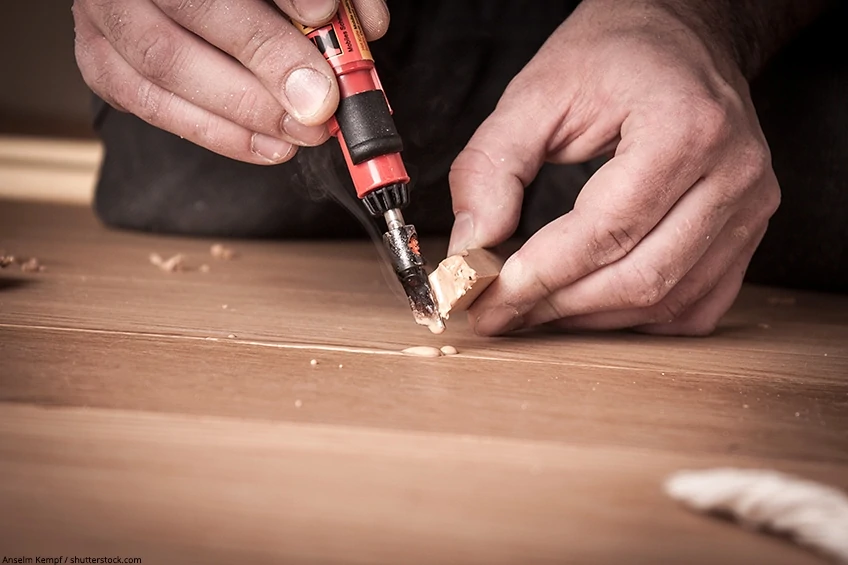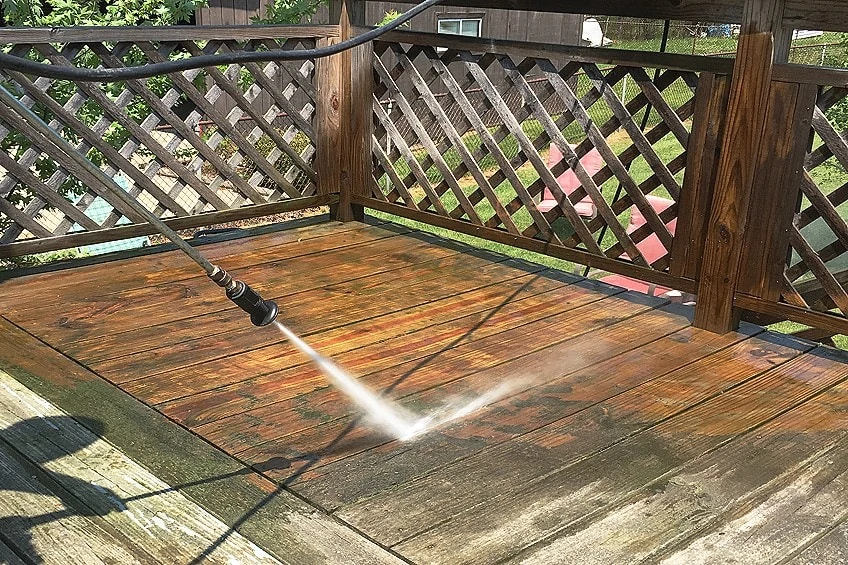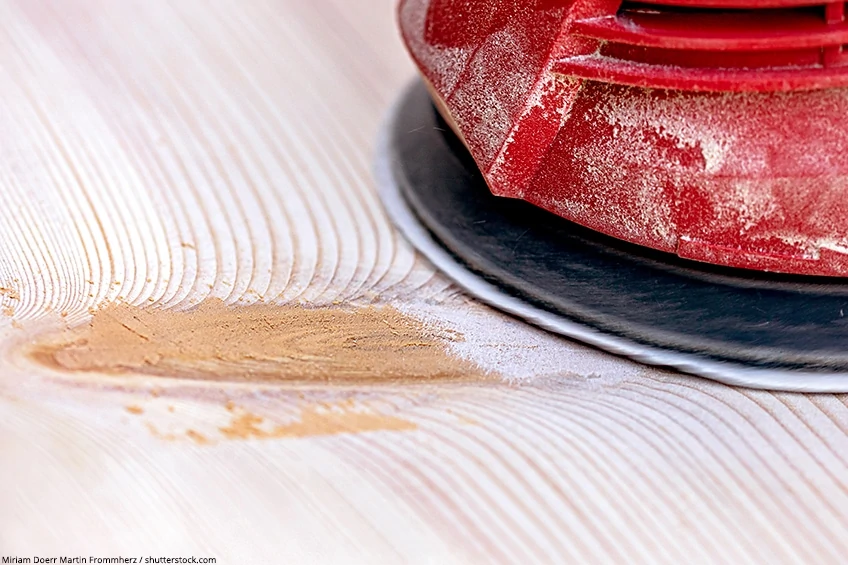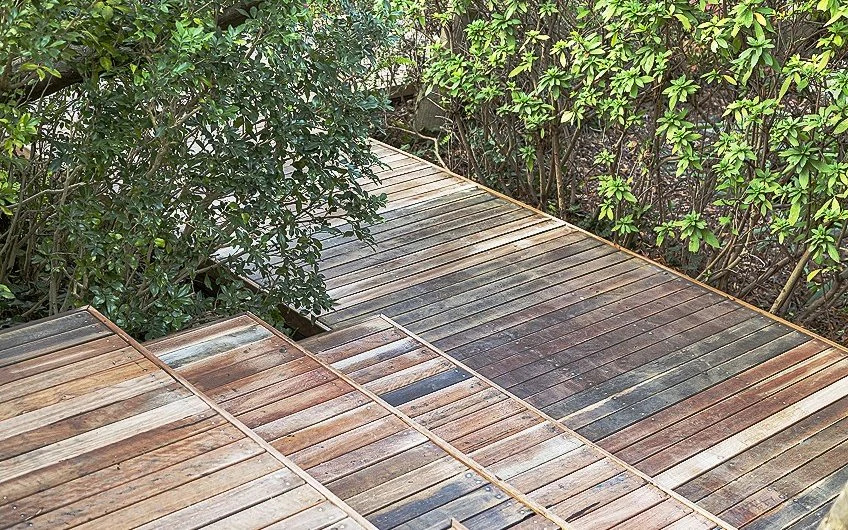Best Wood Filler For Decks – Your Outdoor Wood Filler Guide
This post may contain affiliate links. We may earn a small commission from purchases made through them, at no additional cost to you. You help to support resin-expert.com
Outdoor wood filler plays an important role in all kinds of woodwork. Doing repairs using a deck filler will go much faster than other repair methods, helping to smooth out dips and indents. It does not matter if you are a professional or just love working with wood, you need to choose the best exterior wood filler. The right choice is what will make your deck or furniture look its best and will do the highest quality job.
Table of Contents
Solvent and Water-based Exterior Wood Filler
There are two options when it comes to deck filler, you have the solvent-based variety and a water-based option. You can use both as a filler, but each have their own benefits.
Solvent-based Exterior Wood Filler
The solvent-based wood filler for decks consists of epoxy or vinyl. These wood fillers do contain higher amounts of VOC and, therefore, have more of an odor. The time it takes for solvent-based fillers to dry is about an hour and to clean you need some turpentine or acetone. The price ranges from $0.50 to $3.80 per ounce.
This is a bit more expensive compared to water-based fillers, but it does provide more resistance to humidity, water, heat, cold, and rot. This is why it is excellent to use on exterior wood surfaces.
Water-based Exterior Wood Filler
This type of wood filler for decks is made up of wood fiber or gypsum and cellulose. They have less of a smell, as they do not have many VOC’s (Volatile Organic Compounds). Certain water-based outdoor wood filler is considered more useful than their solvent-based counterparts, as it can be diluted with water. This makes it easier to be used on projects that need a thin filler.
Water-based wood fillers dry quickly in around 15 minutes and cleaning is easy, you only need some water and soap. The costs generally range from $0.40 to $1.50 per ounce.
Best Exterior Wood Filler
Best Wood Filler for Decks: PC-Wood Repair Epoxy Paste
This is one of the best wood filler for decks and comes in two containers, blend the two and it creates a 2-part epoxy paste. This product is perfect for wood surfaces, as it is durable and works well on difficult surfaces.
- Two-part epoxy paste to replace missing or rotted wood
- Can be used in indoor and outdoor applications
- Can be painted, stained, and machined after fully cured
The PC-wood repair epoxy is versatile and can be used in both outdoor and indoor projects. Also, it can withstand high temperatures and severe conditions. It has a high resistance against cracking and has no shrinkage. It can also resist UV light as well as salt and freshwater and stand up to damages caused by animals and insects. This wood filler is suitable for vertical filling.
Pros
- Has an extended work time
- 2-part epoxy formula
- Great tack capabilities
- Can withstand extreme temperatures
- Made of actual wood sawdust or fibers
Cons
- Many say it is a little thick
Best Wood Filler for Decks: ABATRON WoodEpox
This epoxy wood replacement compound can be purchased as a kit and is perfect for filling any flaws in the wood surface. The product is popular because it cures inside an hour and can be molded easily.
- Repair Rotted Wood: Fills and rebuilds missing sections of wood
- No Shrinkage: Easy to apply high-performance compound
- Safe to Use: Greenguard certified, safe for interior and exterior
The one disadvantage is that you cannot easily stain it. The product is great for exterior surfaces, as it provides effective resistance. Even if it is applied to surfaces exposed to direct sunlight, it will not crack like other epoxy fillers.
Pros
- Simple to clean with acetone
- Can be used for indoor and outdoor projects
- Cures solid
- Simple to sand and paint
- No shrinkage
- 2-part composition
Cons
- Not good for softwoods
- Should not be used for big holes
Best Wood Filler for Decks: Elmer’s E855 Wood Filler
This carpenter’s wood deck repair filler is a well-liked product, and some would say it is the best exterior wood filler. You can get the filler in 3.25-inch and 7-inch tubes, a convenient size to carry around. This wood filler is water-based, comes in 6 different colors, and can be sanded and painted.
- Available in 6 colors and can be sanded and painted
- Resists shrinking and cracking
- Easy water clean-up and solvent free
This is an ideal wood filler for deck cracks. The size of tube allows you to squeeze the product directly into cracks, making application even easier. This filler also resists shrinking and cracking, leaving you with a clean and even surface long after application. Recommended for indoor use.
Pros
- Comes in a variety of colors
- Simple to keep clean
- Shrink and crack-proof
- Easy to carry around
Cons
- Because of the smaller size, the product may dry within the tube
What to consider when buying your outdoor wood filler for decks
Wood Deck Repair Filler Applications
Wood filler products are designed for certain purposes. You get fillers that are used in voids, to fill things like holes, divots, or gashes in all types of wood. Then, you get pore fillers, which are used in open-grain wood, and fills these imperfections. For example, smoothing over a natural course wood surface as in the case of oak or elm wood. The wood filler, in this case, floods the pores and establishes a level surface.
This is excellent for using on furniture wood. Finally, you do get the all-around wood fillers, which can fill both pores and voids.
Consistency with your Wood Filler for Deck Repair
The consistency of wood fillers can be runny (thick but runny like pancake batter) or thick like putty. The putty-like wood fillers are used more for voids and the more fluid fillers are great for filling pores. Choosing the correct filler is important because if you choose the wrong one for a particular job, it will not provide the desired results.
For example, the fluid type fillers do not have the consistency to fill a void properly. However, you can thin some thicker fillers to cover pores.
The Color of your Wood Deck Repair Filler
Most wood fillers can be found in white or, of course, various shades of wood. You can also purchase clear wood filler in the case of filling pores. If you are not going to stain the wood or paint it, select a color that is similar to the surface you are working on. If you want you can also get a contrasting color, depending on the look you are going for.
When you do decide to paint or stain your wood surface, make sure you purchase a compatible wood filler product. Choose a filler that is white or a color that is slightly lighter than the paint or stain you are going to use.
Where to apply your Wood Filler
Wood fillers can either be used only on surfaces indoors or you get fillers that can do both indoor and outside surfaces. This tells you how good the filler can withstand environmental factors while applying, curing, even once completely dried.
Only apply stated indoor wood fillers on surfaces inside. For example, a tea tray or coffee table. If you use an indoor specific wood filler on something that remains outside, the filler will react to the environment, whether it is hot, cold, or wet, causing it to crack or shrink.
Applying a filler that can handle both interior and exterior applications will protect surfaces whether they are inside or outside in harsh weather conditions. The wood filler should not crack or shrink once it has dried. This type of filler which is water-based is also useful because it is tough enough for outdoor surfaces and does not produce much odor while still wet.
Solvent-based fillers that can be used both outside and indoors work great in both situations but are best used on outdoor heavy-duty jobs. For example, repairing a rotting deck. The solvent-based products tend to withstand the elements better and even though they emit some odor, this will disperse outside quickly.
Packaging for Wood Fillers
Most wood fillers come in stick form, tubes, or tubs. The tubs come in two varieties, the one you can use straight away without any mixing, while others come in a two-part system and must be mixed before application. You can apply these using a spreader or putty knife. These are also more cost-effective, as they come in larger amounts and can be used on bigger projects.
Wood fillers in tubes can easily be squeezed out, while you simply break a piece of a stick filler and fill by hand. These are less cost-effective and are great as a wood filler for deck cracks and other smaller projects.
Guide to repairing your wooden deck
- Remove any rotten wood and paint that is loose using a hard brush. Afterwards, sand the area with medium coarse sandpaper to level the surface
- Use a deck cleaner if the surface is unfinished or use a deck stripper if the wood has been finished. When doing this always follow the manufacturer’s directions for best results. Allow the wood stripper or cleaner to sit for 10 to 15 minutes. Use the hard brush to scrub the wood and rinse using a garden hose. The wood must then dry thoroughly
- Take your putty knife and take some filler out of the tub, or if it is in a tube you will need to mix the two components. From a tube, squeeze the correct amount of filler onto a paper plate, and mix with the correct amount of hardener. Mix these two substances until it starts to thicken
- Apply the filler to your wood surface using the putty knife. Press this down into the hole, and if required, use 1/8-inch more. Carry on with this process, using 1/8-inch of filler each time until slightly above the deck level
- Let the wood filler dry, have a look at the directions on the label for the drying time. The filler might shrink while curing, simply add more filler and allow to dry
- Use medium-grit sandpaper to sand the surface until it is even with the deck. If there are more holes, follow the same process
Types of holes you can get in a wooden deck
Knothole – Small
Sometimes, wood knots can fall out and produce holes. This happens mainly with cheaper woods used for decks. Wood with knotholes should not be used for wooden decks and wooden support railings, but sometimes they do get in. Smaller holes can easily be fixed but require a few steps to complete.
Begin by sweeping clean the deck surface, then use your deck filler to patch the hole by following the directions on the label. As mentioned, wood fillers do come in tubes and tubs, but using a spatula to scoop some filler out of a tub is the easiest and fastest method.
The filler must set for 24 hours, then you can sand the surface to even it out. Some recommend waiting a further 24 hours and then sand the surface again. This is because the wood filler can expand while curing.
When the filler has been sanded smooth, sweep the deck, and then stain the surface. The filler should accept the stain; however, it might be a little different in color than the rest of the surface. If you think it looks too different, try applying a touch darker stain to get a better color match.
Popped fastener – Small Hole
You will need to fix a hole from a screw or nail that has popped out. Have a look to see if the fastener came free due to rot. If you discover it is rot, the entire wood board will need to be replaced, otherwise, if there is no rot you can simply just replace the fastener. Make sure you inspect the wood closely on both sides, if it looks okay, use a new screw, and fasten the board. Make sure it is secure and that it will not curl or buckle during significant temperature changes.
Large Holes in the Wooden Deck
First, confirm if it is a big knothole, you will notice cracks in the area around the hole. Otherwise, check to see if the wood is badly worn. If the wood is badly worn, only filling the hole will not help the underlying problem and it will begin to crack.
Instead, cut out a piece of wood that matches the deck and the hole. Screw this into position and use outdoor wood filler for decks to fill any gaps. Finally, stain the deck again.
Holes created by Rot, Fungus, and Bugs
You will need to take action if you see holes in the deck which has been created by rot, fungus, or bugs. First, remove the piece of damaged wood and inspect surrounding wood boards to see if anything has spread. Take all damaged wood out and you will need to replace these.
Questions and Answers
Are wood filler and wood putty similar?
No, they are two different products. The wood filler contains wood fibers or sawdust, which is suspended inside a binder. The putty is generally a plastic-like epoxy, polyurethane, or fiberglass.
Can I use wood filler to repair my deck?
If your wood deck has small holes, is pitted, or has small areas of rot, you can use wood filler for deck repair. However, larger, or major damage will need more than wood filler.
How can I fix deep holes?
For larger holes, using a two-part epoxy is recommended. The filler and hardener are mixed, which can then be shaped in the hole. It can also be shaped after it has dried. Damaged doorjambs, moldings, sills, wood trim, and baseboards can also be fixed with epoxy.
Can you repair rotten wood without completely removing it?
Depending on the extent of the rot, you can use polyester filler. Apply a wood hardener and filler.
For example, repairing a rotten door frame: First, remove the rotted pieces with a sharpened tool. Once finished you can then add a coat of wood hardener. Next, mix the polyester filler or Bondo wood repair and press into the indentations using a putty knife.
Is deck filler just as strong as the wood?
Wood filler for deck repair is tougher than the wood. Apply filler carefully, make sure to use just enough, as any excess might be difficult to sand away.


